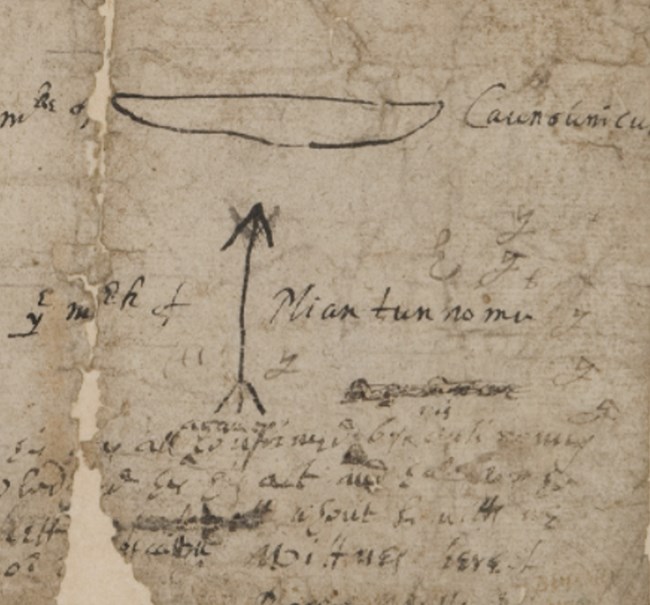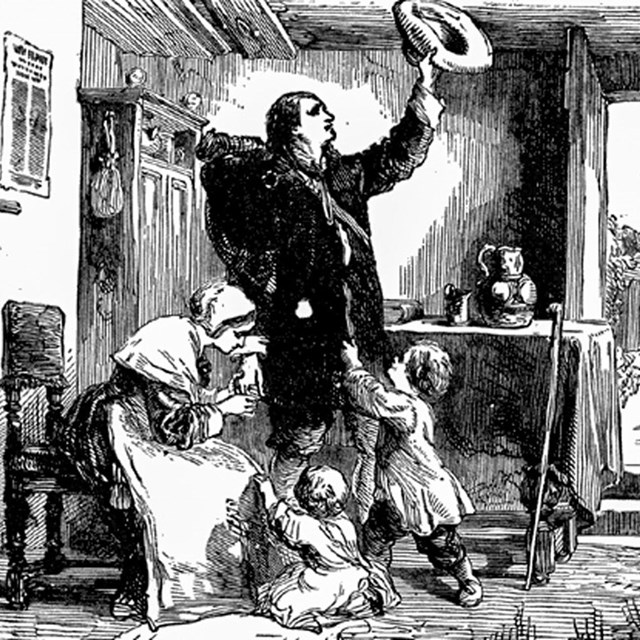
When Roger Williams was living in Plymouth, he earned his living as a trader of English goods with the native people. He became friends with leaders of both the Wampanoag and the Narragansett. After Williams fled Massachusetts Bay Colony, the Wampanoag helped him survive the winter of 1636 and gave him land. In the spring, since that land was in Plymouth, Plymouth officials forced Roger to move into Narragansett territory. Williams made a deal with the Narragansett. They gave him the land that became Providence. This deal benefited both Roger and the Narragansett. It diminished the distance both had to travel to trade, and it gave the Narragansett an English ally. This deal was later formalized in a deed dated March 24, 1638. It was signed by the Narragansett Sachem Canonicus (signature was a symbol of a bow) and his nephew Miantonomo (signature was a symbol of an arrow). In 1636, Miantonomo went to Boston. He wanted to prove his loyalty to the English during the Pequot War. He and other Narragansett warriors assisted the Connecticut Colony's expedition against the Pequot. The Pequot lost this war. In 1638, Miantonomo signed a treaty between the Narragansetts, the Connecticut colonists and the Mohegan. However, the Narragansett and the Mohegans disagreed over who should control the Pequot people and land. With tensions mounting between the Narragansett, the Mohegans and the English, Miantonomo tried to organize other tribes in a union against the English. The conflict between the Narragansett and the Mohegans turned into a war in 1643. This ultimately led to Miantonomo’s death. In April of 1644, Canonicus made a formal treaty submitting the Narragansett as subjects of King Charles I. He hoped this would stop English interference in tribal affairs because they now were subjects of the same king. As Canonicus lay dying in 1647, he called for Roger Williams. Canonicus worried that future relations with the English would be troublesome. Williams assured him the English could be trusted. Canonicus then broke a stick into 10 pieces. With each piece he recounted a time when the English had broken their word. Although the Narragansett and English lived in peace for nearly 30 more years, the beginning of the King Philip’s War proved Canonicus’ fears were well founded.
|
Last updated: February 16, 2024


